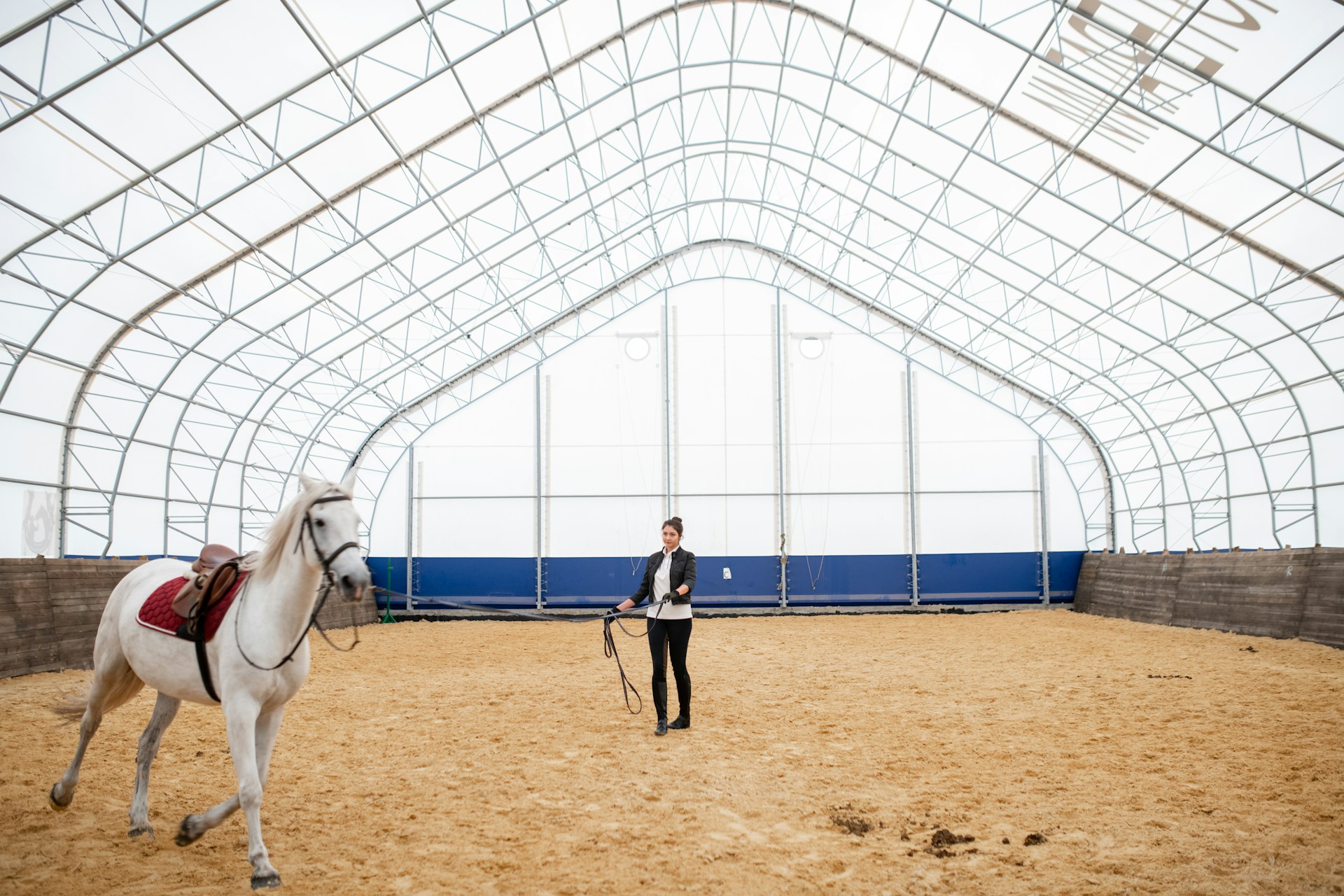When it comes to designing a horse arena, sand is a make-or-break decision. It’s not just about creating a smooth surface; the sand you choose can affect your horse’s performance, comfort, and even safety. But, with so many options out there, how do you choose the right one?
Contents
What Makes Sand So Important?
Before we dig into the details, let’s talk about why sand selection is crucial. Imagine riding on a surface that’s too soft – your horse’s legs would sink, increasing the risk of injury. On the flip side, if the sand is too hard or abrasive, it can cause discomfort, joint stress, and hoof damage.
The right sand creates a balance between firmness and cushioning. It provides grip while allowing for shock absorption. It supports the horse’s movements, whether they’re performing dressage, jumping, or just enjoying a good gallop. Your horse’s comfort, health, and performance all start with the ground beneath their hooves.
Where Can You Buy Sand for Your Horse Arena?
Where can I buy sand for my horse arena? Well, you’ve got several options. Many landscaping and construction suppliers offer different types of sand. Additionally, you can find specialized equestrian retailers online that sell sand specifically designed for horse arenas.
Shopping online opens up a broader range of options, allowing you to compare sand types, read reviews, and even get expert advice. Many online retailers can deliver sand directly to your arena, saving you the hassle of transport.
Just make sure to research suppliers carefully, and always ask about the specific sand type, particle size, and composition before making your purchase. The right sand is an investment, so taking the time to find a reliable supplier is key to getting the quality your arena needs.
Key Factors to Consider
Now, let’s look at the main factors you should consider when selecting sand for your horse arena. You can’t just grab any sand and call it a day!
1. Particle Size
This might sound technical, but it’s important. Sand is made up of different-sized particles. The finer the particles, the softer the sand. Coarser particles provide a firmer footing. You need to find the right balance for your needs.
- Fine sand – Provides softness, but it may be too deep and cause your horse to work harder, leading to fatigue.
- Coarse sand – Offers better stability, but can be too hard on your horse’s legs if it lacks the right cushioning.
Most equestrians opt for medium-sized sand particles, as it tends to provide that sweet spot between softness and firmness.
2. Sand Shape
The shape of sand particles also matters. Sands with round particles tend to shift more, which can cause instability underfoot. Angular particles, on the other hand, lock together better and create a more stable surface.
- Round particles – Softer and easier on hooves, but less stable.
- Angular particles – Provide better traction and stability, but they may be harsher on hooves.
Look for angular or sub-angular sand for a balance between grip and comfort.
3. Sand Composition
All sand is not created equal! Sand can be made of a variety of materials, and this composition can greatly impact its performance in a horse arena.
- Silica sand – The most common choice for horse arenas because it’s durable and hard-wearing.
- Limestone sand – Softer and breaks down more easily, which means more frequent maintenance.
- Crushed granite – Provides a firmer surface but can be quite abrasive on hooves.
Silica sand is typically favored because it provides the longevity and traction that horse arenas demand. It holds up well against the constant pounding of hooves and doesn’t degrade quickly, making it a cost-effective option in the long run.
4. Drainage Ability
Good drainage is non-negotiable in a horse arena. Standing water or overly wet surfaces can lead to injuries, and nobody wants that. Sand with good drainage properties ensures that water flows through it rather than pooling on top.
When selecting your sand, you’ll want to consider how well it will drain, particularly if your arena is outdoors. A sand that compacts too tightly will hold water, turning your arena into a mud pit after every rainstorm. Look for sand that drains well and stays usable even after heavy rainfall.
Choosing Sand Based on Your Discipline
Different equestrian disciplines have different requirements, so let’s talk about how your choice of sand might vary depending on what you and your horse enjoy.
Jumping and Eventing
If you’re into jumping or eventing, you’ll need a surface that provides plenty of grip to prevent slipping on take-off or landing. Medium-sized, angular sand particles are usually a good bet here. These sands provide stability without being too harsh on your horse’s legs.
Dressage
For dressage riders, footing that allows for precise movements is key. You’ll want sand that provides some cushioning but isn’t too deep. Again, medium particle size with angular shapes works well. The surface should allow your horse to move fluidly while maintaining stability during those intricate movements.
General Riding
If your arena is for general riding or training, you’ll likely want a versatile sand that offers a balance between grip and softness. A mixture of medium sand with good drainage capabilities should cover most bases.
Maintenance Is Key
Choosing the best sand is just the start. Maintenance is equally important to keep your arena in top condition. Over time, sand will compact, shift, and break down. Regular grooming, leveling, and topping up the surface are essential to maintaining the quality of the footing.
In addition to grooming, consider watering your arena regularly. Moist sand tends to bind better, reducing dust and providing a more stable surface. If your arena is outdoors, you may need to install proper drainage systems to handle heavy rain and prevent waterlogging.
Environmental Impact
Let’s not forget the environment! Depending on where you source your sand, there can be different environmental impacts. Some sands are more sustainable than others, and it’s worth looking into this if you’re environmentally conscious. Supporting local suppliers can reduce the carbon footprint of transporting heavy materials like sand.
Making Your Arena Perfect for You and Your Horse
Your horse’s comfort and safety depend on getting the right sand for your arena. It’s not just a surface – it’s the foundation for everything you do together. By understanding the importance of particle size, shape, composition, and drainage, you can make a choice that suits your riding style and ensures your arena remains in great shape for years to come.



